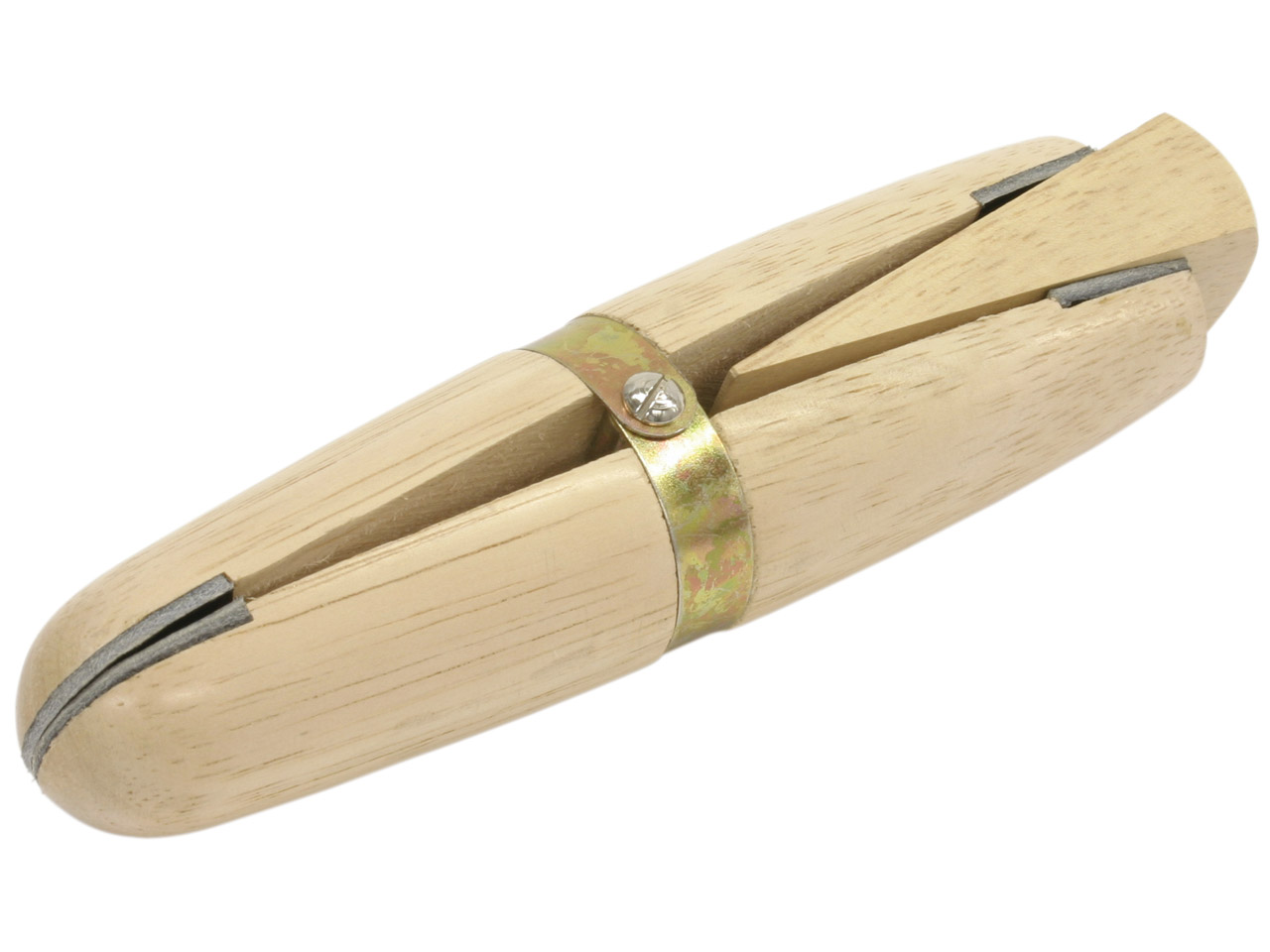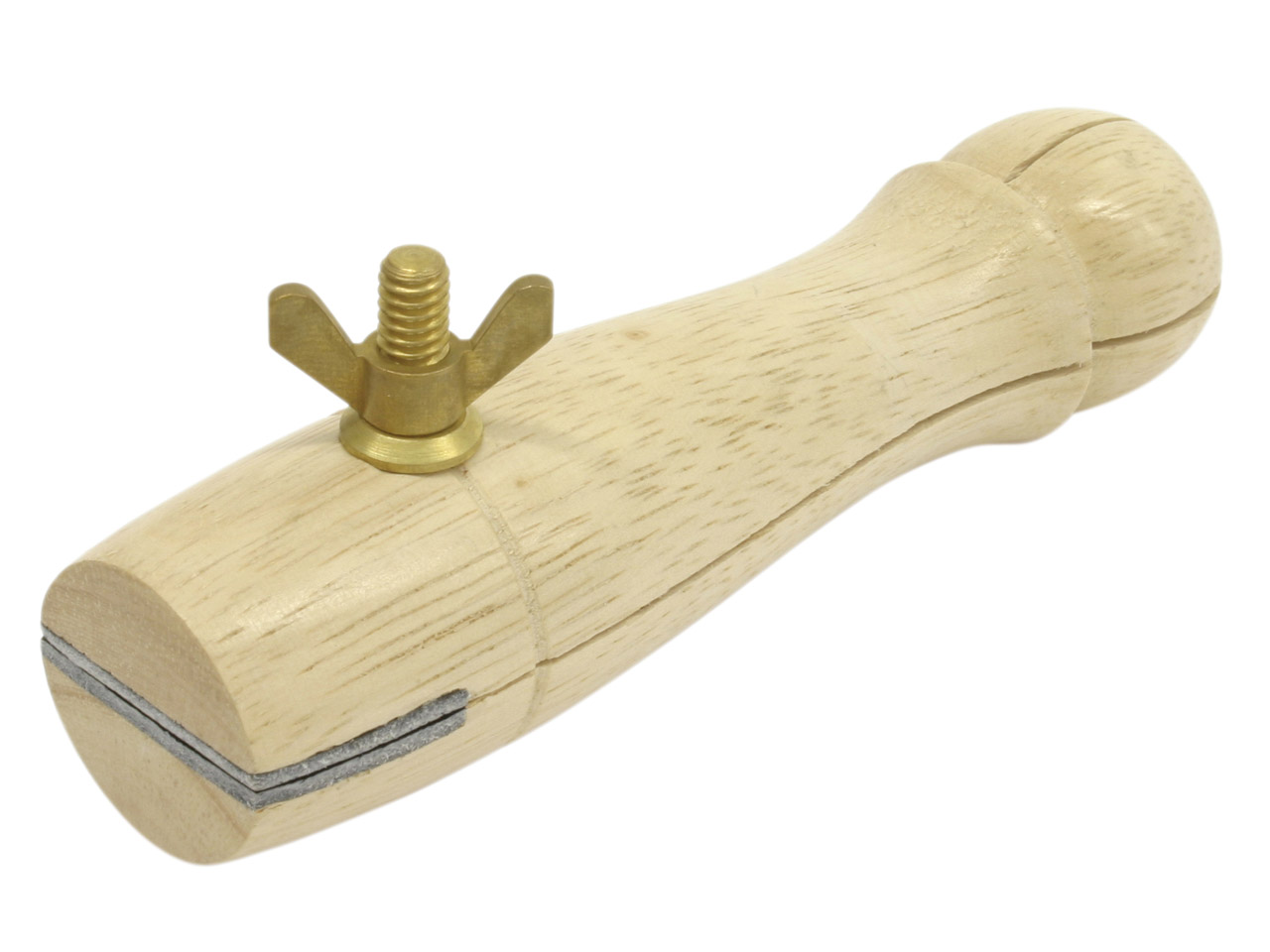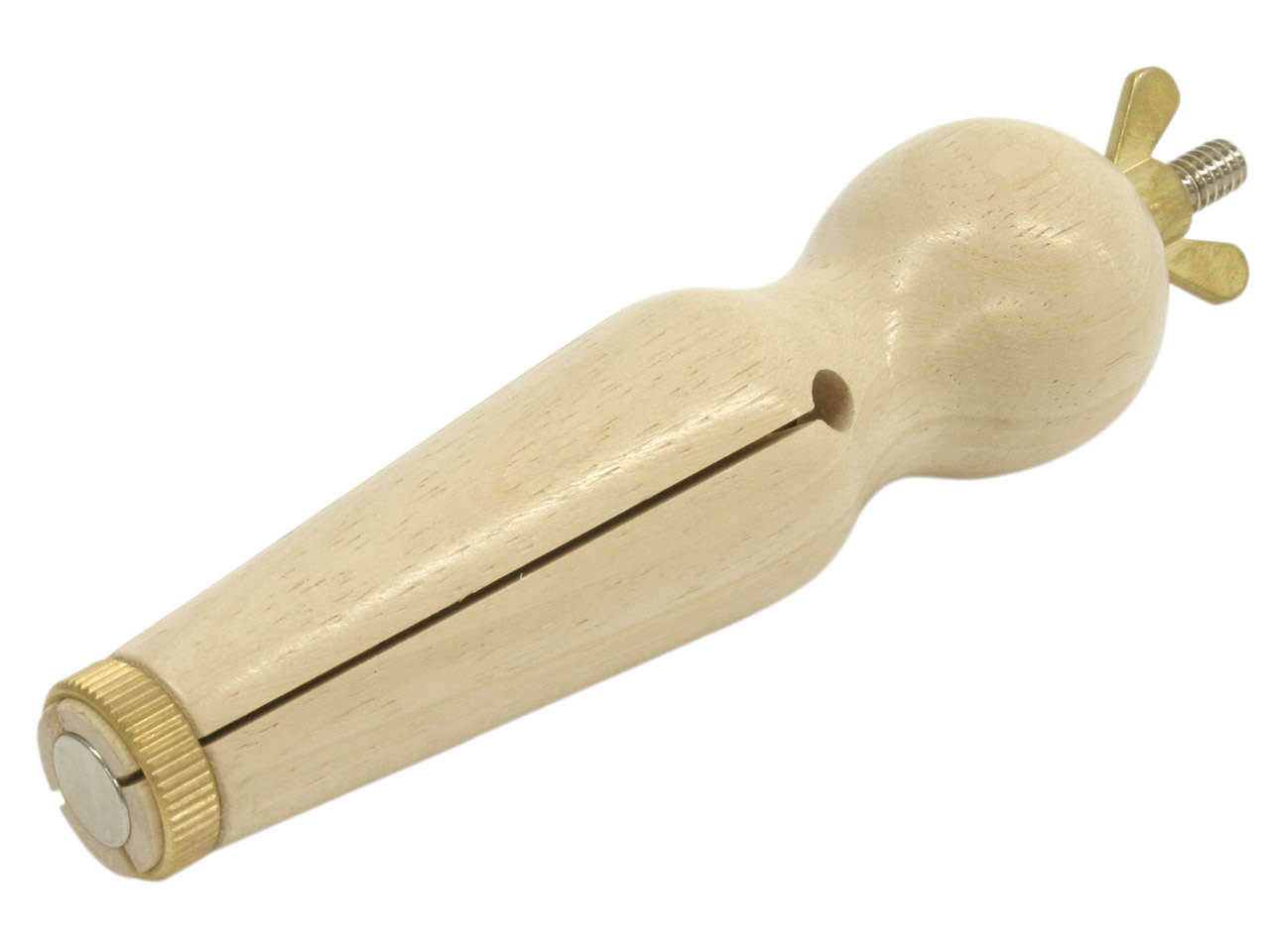Whether you’re just starting out in jewellery making or have your own successful business, ring clamps are often seen as one of the most useful bench tools to have – and are typically inexpensive for all that they can offer. For jewellery makers, they are particularly useful for holding tiny pieces when filling, sanding, forming or polishing. That being said, there’s a wide range of clamps available on the market, so which one should you choose? Find out how to use a ring clamp and which one is right for your projects below.
What is a ring clamp?

Traditionally, ring clamps are used for holding rings while polishing or filing, though they can hold other items such as a piece of metal. They are braced against the bench pin with one hand to provide a secure and safe way to hold rings, and other items, whilst working on them. With a jeweller’s ring clamp, there’s no need to add pressure or force to keep the clamp closed as you would with pliers – all you need to do is lock your piece in and hold the tool still!
They also allow you to move the piece around without having to touch it, which is ideal if your hands are dirty from previous work or you need to keep your fingers out of the way of sharp tools or nicks on the metal. Most adjustable ring clamps also have replaceable leather or felt pads inside the jaws to protect your piece from any scratches.
How to use a ring clamp in jewellery making
Wooden clamps are lightweight and therefore suitable for a range of jewellery making techniques and projects. Some of the most common uses for ring clamping in jewellery making are:
- Holding parts securely when drilling
- Filing and sanding ring shanks and bands
- Securing sections of square stock for precise sawing and drilling
- Holding wires for coiling/weaving
- Filing tubing edges flat for tube jewellery settings
Wooden ring clamps can also be modified to suit the jeweller’s needs and working style. For example, if you file a channel in the tip of the clamp, you can lock it in place in the bench peg to provide stable support while you work and avoid it slipping.
Choosing your ring clamp
With a range of options to choose from, it can be difficult to know which one is right for you. Each jeweller has a preference on which one they use depending on how they like to work, while some jewellers stick to what they know and have used the same clamps throughout their careers. We have outlined some of the most common types of wooden ring clamps below to help you make your choice.
How to use a ring clamp hinge and wedge
[iframe width=”560″ height=”315″ src=”https://www.youtube.com/embed/_EgE8ffGDzM” frameborder=”0″ allow=”accelerometer; autoplay; encrypted-media; gyroscope; picture-in-picture” allowfullscreen></iframe]
The ring clamp hinge and wedge works on a hinged principle that moves with a seesaw motion, and comes with a separate wedge that is used to hold the ring in place at the other end. Removing the wedge allows for the two halves to move freely from the pivoted point in the centre. To clamp your ring, place it vertically between the felt tips and gently tap the wedge in at the opposite end. This will then tighten the felt ends securely around the ring. To release, move the wedge.
This type of clamp comes with two shaped edges. The round jaw is typically used for rings and curved pieces, while the straight jaw is used for shapes with straight sides.
How to use a ring clamp with side screw

A ring clamp with a side screw is hinged at the bottom with a wing nut on the side and a spring mechanism in the middle. This type of clamp holds the ring vertically between the two leather pads. To tighten and release the pads around the ring, simply turn the wing nut screw on the side of the clamp.
Although for some jewellers, the side screw often gets in the way while they work – so the screw base may be another choice.
How to use a ring clamp with screw base
 Sectioned in quarters along the length with a metal core running through the middle, this clamp is designed in a tapered cone shape. To use a ring clamp with a screw base, you place the ring around the tip with the screw unturned. As you turn the screw, the metal core will move down forcing the clamp to expand and hold the ring in place. When you’re done, simply turn the screw in the opposite direction to release. With this clamp, you have complete 360° access to the ring, allowing you to work on the piece without having to reposition it within the clamp.
Sectioned in quarters along the length with a metal core running through the middle, this clamp is designed in a tapered cone shape. To use a ring clamp with a screw base, you place the ring around the tip with the screw unturned. As you turn the screw, the metal core will move down forcing the clamp to expand and hold the ring in place. When you’re done, simply turn the screw in the opposite direction to release. With this clamp, you have complete 360° access to the ring, allowing you to work on the piece without having to reposition it within the clamp.
This is ideal if you’re lightly sawing a groove into the circumference of the ring, as you can constantly turn it and get a straighter line.
GRS ring clamp
GRS also produce a metal clamp that works under the same principle. Use the nut on the bottom to both loosen and tighten the jaws and secure your piece in place. This clamp can also be used in conjunction with the GRS Benchmate system that attaches to the front of your workbench. For many jewellers this is an ideal choice as it gives full access to the piece with both hands, making it perfect for more detailed and tricky designs. While this is the more expensive choice, it is beneficial for those who frequently work with rings – particularly on stone setting and engraving.
Discover our range of GRS jewellery tools to build your Benchmate system today.
Find quality ring clamp tools at Cooksongold
Whether you struggle to keep your pieces still as you work, or you need to keep your hands free for more delicate designs, we offer a selection of vice and clamping equipment suitable for a range of jewellery projects. Get your bench set up for your next project with high-quality jewellery tools from Cooksongold.

Cooksongold
